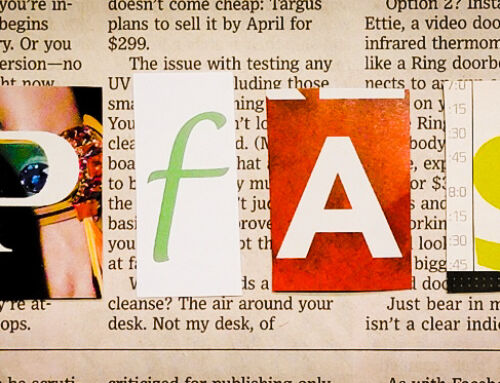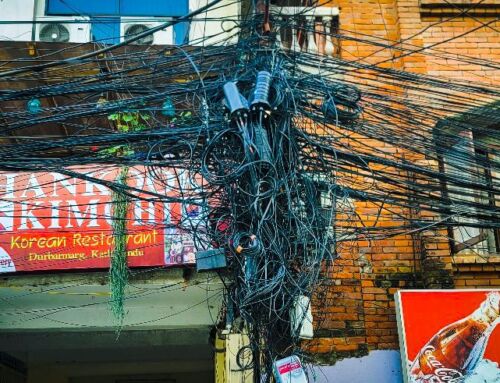View by Topic
Recent Articles
-
EPA Designates PFOA and PFOS as Hazardous Substances under Superfund LawSaturday, April 20th, 2024
-
Federal Government Finalizes New Efficiency Standards for LightbulbsSaturday, April 13th, 2024
-
2024 IECC is Final After Addressing Preemption IssuesSaturday, April 6th, 2024
-
Settlement Portends Broad Failure in Attempts to Ban Natural GasSaturday, March 30th, 2024
-
SEC Climate Disclosure Rule Stay and Venue Now in the 8th CircuitSaturday, March 23rd, 2024
View by Month/Year
“Green Building Law Update” Headlines
Recent Articles & News from
Stuart Kaplow’s blog
at GreenBuildingLawUpdate.com
- EPA Takes Action: PFOA and PFOS Now Hazardous Substances Under Superfund Law April 21, 2024
- Shedding Light on the Future: The Evolution of Lightbulbs in the Wake of New Energy Efficiency Standards April 14, 2024
- 2024 International Energy Conservation Code is Final After Addressing Preemption April 7, 2024
- Settlement Portends Broad Failure in Attempts to Ban Natural Gas March 31, 2024
Subscribe to the Green Building Law Update!
Stuart Kaplow brings his expertise and extensive experience to the table with his unique digital publication, "Green Building Law Update". Subscribers receive regular updates to keep them informed about important issues surrounding Environmental Law, Green Building & Real Estate Law, as well as the emerging demand for Environmental Social Governance (ESG).
Get fresh content through the lense of Stuart Kaplow's cutting-edge expertise, innovative commentary and insider perspective. Don't miss another issue! Subscribe below.
LEED Bird Collision Deterrence to be Required in Highland Park
his article first appeared on my Green Building Law Update blog. The Green Building Law Update blog is intended for the entire environmental industrial complex (not just lawyers).
Please sign up for notice of new blog posts via email, at Green Building Law Update blog.
The City of Highland Park, Illinois, became the latest jurisdiction to consider bird friendly building regulations when on June 22, 2015 the City Council forwarded a proposal to the Plan Design Review Commission for comment prior to final approval by the Council.
Specifically, the City Council is proposing that bird friendly regulations be adopted for commercial, industrial and multi-family buildings and that they follow requirements set forth in the LEED NC-2009 SS Pilot Credit 55 Bird Collision Deterrence.
The Highland Park City Code already requires bird friendly building construction for public buildings only. That ordinance was approved in February 2011 and provides the City “shall, to the greatest extent practicable, incorporate bird-safe building materials and design features into the design of all newly-constructed buildings to be used primarily by the City ..”
And there are other bird friendly building construction laws scattered across the country, although nearly all only regulate government funded building.
The State of Minnesota has since May 2013 required for all projects that receive general obligation bond funding from the State for new construction or major renovation apply the LEED SS Pilot Credit 55 standard. It is that same standard now being adopted in Highland Park.
There’s no nationwide repository of bird casualties or injuries, so estimating the scope of this is difficult. It is widely perceived that building collisions, and particularly collisions with windows, are a major threat to birds, with estimates swinging widely. A recent literature search published in The Condor, based on 23 studies, estimates that between 365 and 988 million birds are killed annually by window collisions in the U.S., with roughly 56% of mortality at buildings 4 to 11 stories, 44% at buildings 1 to 3 stories, and less than 1% at skyscrapers. But keep into in mind there are only about 21,000 buildings 12 stories or higher in the U.S. versus over 123 million 1 to 3 story buildings, so statistically only 24 birds might perish each year at any one skyscraper.
But at Duke University, the Fitzpatrick Center with a largely glass building envelope caused 85 bird deaths during 9 weeks.
It is suggested that green building programs, like LEED, encourage using natural light to reduce energy use and encourage green views resulting in the use of more glass. And windows are no friends to birds as we all know from the popular Windex television ad.
However, on that same Duke campus, the Penn Pavilion, almost entirely made of glass, was fitted with etched panes and saw only two collisions last year. With biomimicry windows can be made bird friendly by covering the glass with a UV reflective coatings or by etching or pigmenting a pattern into the glass, which birds can see while remaining virtually transparent to the human eye.
There has been a lot of media attention about the almost 200,000 square feet of glass at the proposed Vikings stadium and the supposed costs of using bird friendly strategies.
Arguably, the LEED SS Pilot Credit 55 is not first cost prohibitive. It seeks to “reduce bird injury and mortality from in-flight collisions with buildings” through compliance with one of several building façade options, one of the interior lighting options, one of the exterior lighting options, and a post construction monitoring plan. Key is developing a building façade design strategy to make the building visible to birds as a physical barrier and eliminate conditions, including lights that create confusing reflections to birds.
And while all of this is good, the window between the average house cat and the bird outside offers less protection than it may appear, with biomimicry features or not. A study in Nature Communications in 2013 reported house cats kill 1.4 billion to 3.7 billion birds per year, far more birds than perish annually due to collisions with windows. And the same study found that wind turbines across the U.S. killed 573,000 birds in 2013.
How many birds can be saved by LEED certified buildings is debatable, but in a post Fedrezzi era, the greatest expansion of the influence of LEED across the U.S. may be incorporating individual LEED credits (from water use reduction, to sound baffling and bird collision deterrence to ..) into local building requirements.









